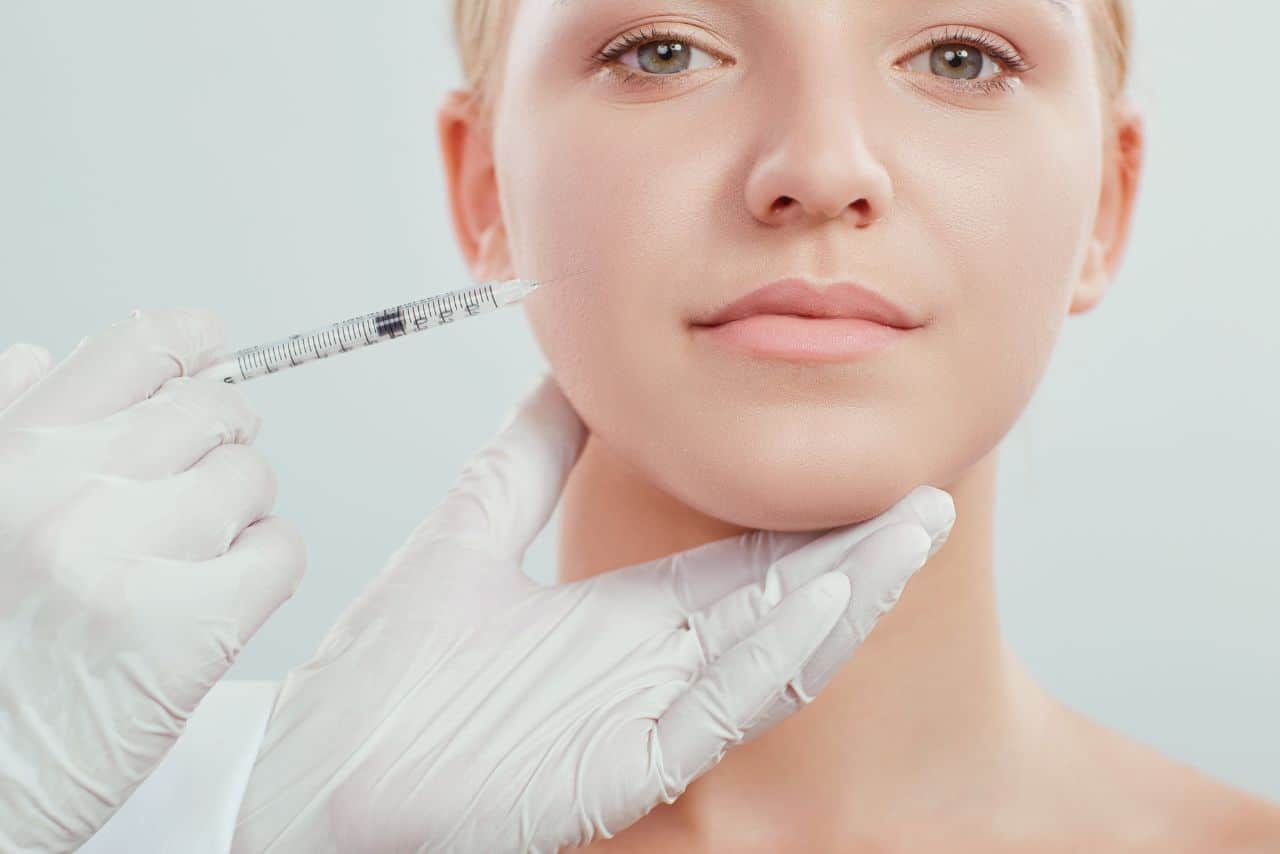
Facial aesthetic medicine, through its ability to rejuvenate and enhance natural beauty, has grown to be a crucial part of contemporary aesthetics. The selection of appropriate fillers for facial augmentation has emerged as a fundamental aspect of this practice. Among the array of available products, Restylane Defyne presents itself as a beneficial choice. This article aims to explore the unique properties and clinical applications of Restylane Defyne in facial augmentation.
Restylane Defyne is part of the broader Restylane product line, a well-respected and extensively utilized range of hyaluronic acid-based fillers. This particular product, lauded for its flexibility and support, offers distinct advantages over others in its category. The subsequent sections delve into the science behind Restylane Defyne, exploring its structure, mode of interaction with tissues, and clinical study data. The article also discusses recommended injection techniques and strategies to manage potential adverse events, providing a comprehensive resource for physicians seeking to optimize their use of this product. Let’s jump right in.
Overview of Restylane Defyne
Restylane Defyne, one of the flagship products from Galderma’s portfolio, is a hyaluronic acid dermal filler meticulously designed to offer a balanced solution for facial augmentation. Its unique properties have positioned it as an optimal choice for smoothing out deep laugh lines such as nasolabial folds and marionette lines.
The product’s distinction lies in its innovative cross-linking technology, known as XpresHAn Technolog, which yields a flexible and supportive gel. This technology provides the dual advantage of maintaining the natural expression and motion of facial features while delivering a robust support structure for the skin. The result is a harmonious balance between flexibility and volume enhancement, allowing for a more natural-looking outcome compared to some other dermal fillers.
Furthermore, Restylane Defyne exhibits a high degree of tissue integration, which is pivotal in avoiding the unnatural stiffness that might be associated with other products. The gel integrates well into the surrounding tissue, thereby reducing the likelihood of lumpiness or granuloma formation post-injection.
In comparison with other dermal fillers, Restylane Defyne occupies a unique niche. Its characteristics make it particularly suitable for moderate to severe facial wrinkles and folds, providing a smooth, subtle, and effective result. This sets it apart from other products that may only be appropriate for milder signs of aging or that may provide an overly volumized appearance.
The use of Restylane Defyne in clinical practice has consistently demonstrated its efficacy and safety profile, reinforcing its reputation as a go-to product for physicians seeking a reliable and flexible option for facial augmentation.
The Science Behind Restylane Defyne
Restylane Defyne is a non-animal stabilized hyaluronic acid (NASHA) dermal filler, boasting a unique formulation that sets it apart from its peers. The proprietary XpresHAn Technology™, or ‘Expression Technology’, employed in the development of this filler, allows for significant flexibility and support – two crucial factors in successful facial augmentation.
XpresHAn Technology involves the crosslinking of hyaluronic acid (HA) molecules. This crosslinking process creates a smooth gel that integrates seamlessly into the skin, permitting natural expressions and movements post-injection. The specific pattern of crosslinking generates a filler with unique rheological properties, offering a balance of elasticity, cohesivity, and plasticity. This results in a product that is not only robust enough to provide structural support and withstand facial dynamics but also flexible enough to adapt to facial movements, thereby avoiding unnatural stiffness.
One might ponder how Restylane Defyne achieves this flexibility. It’s due to the varying degrees of cross-linking within the HA network, allowing for a ‘flexible gel texture’. This enables the gel to adjust its shape in response to the patient’s facial expressions and movements, providing a more natural look and feel.
Turning to clinical trials, studies reveal Restylane Defyne’s effectiveness and safety. It is important to note the excellent biocompatibility of HA, which minimizes the risk of allergic reactions and reduces the likelihood of granulomas or nodules formation. Long-term clinical studies have shown persistent aesthetic improvement with treatments, owing to the filler’s prolonged degradation time, which is due to its specific crosslinking.
Applications of Restylane Defyne
Restylane Defyne is a versatile dermal filler that presents a plethora of applications in the realm of facial augmentation. One of its key applications involves the treatment of moderate to severe deep facial wrinkles and folds, including nasolabial folds and marionette lines. The product’s unique cross-linked hyaluronic acid structure allows it to maintain a natural look and feel, all while providing the required support and volume.
Notably, Restylane Defyne adapts within the skin to maintain the facial expressions and movements, leading to a more natural appearance post-treatment. This adaptability stems from its distinctive XpresHAn Technology™, which enables the gel to flex within the skin layers. This characteristic is particularly beneficial for areas with higher movement, preserving expressiveness while ensuring a smooth and youthful look.
Moreover, the filler is employed to restore lost volume and contour to the face, thereby addressing the visible signs of aging. Areas such as the cheeks, chin, and jawline can benefit from the subtle lifting and volumizing effect of Restylane Defyne, offering patients an enhanced yet balanced facial profile.
The use of Restylane Defyne is not limited to correcting existing signs of aging. It is increasingly employed as a preventative measure, contributing to maintaining the skin’s suppleness and resilience in younger patients with initial signs of aging.
It is crucial to note that the effectiveness of Restylane Defyne, like any other filler, depends on careful patient selection and a thorough understanding of facial anatomy. The decision to use Restylane Defyne should be based on a comprehensive patient consultation and assessment to ensure the best possible outcomes.

Injection Techniques
Facial augmentation using dermal fillers such as Restylane Defyne necessitates precision, knowledge of anatomical nuances, and a comprehensive understanding of the product’s unique characteristics. This section outlines the suggested injection techniques, focusing on depth of injection, volume considerations, and the selection between a needle and cannula.
Restylane Defyne, thanks to its flexible and supportive characteristics, allows for a level of malleability that optimizes patient-specific results. The depth of injection is determined by the area of treatment. When addressing moderate to severe nasolabial folds and marionette lines, a mid to deep dermal injection is typically advised. This allows for the product to integrate smoothly into the tissue, thus creating a natural and long-lasting effect.
Regarding the volume of Restylane Defyne, it is paramount to inject conservatively, following the principle of “less is more”. A gradual approach allows for an assessment of the aesthetic outcome and gives room for further correction if necessary. The average volume per treatment area is approximately 1-2 ml, but this may vary based on the severity of the wrinkle or fold and the desired outcome.
The choice between a needle and a cannula for Restylane Defyne administration is largely dependent on the practitioner’s comfort level and the area of treatment. While a needle offers more precision, a cannula may minimize potential bruising and swelling. Therefore, the choice should be informed by the treatment area’s anatomy and the goal of reducing potential discomfort or side effects for patients.
Summing up, the effective application of Restylane Defyne involves a blend of product understanding, accurate technique, and individualized treatment plans. These are integral components to achieving the best possible aesthetic outcomes while maintaining a high standard of patient safety and comfort.
Management of Adverse Events
The management of potential adverse events is a critical aspect of patient care in facial augmentation with Restylane Defyne. Even with proficient injection techniques, complications may still arise, necessitating a well-informed and proactive approach.
Adverse events associated with Restylane Defyne are generally minor and transient. They may include, but are not limited to, erythema, swelling, pain, itching, and minor bruising at the injection site. These events often resolve within a week following injection into the dermis and within two weeks following injection into or below the deep dermis.
To minimize these complications, it is advised to fully assess patients’ medical history for potential allergies and ensure appropriate aftercare instructions are given. Should these reactions persist beyond the typical timeframe or if an acute inflammatory response occurs, it is critical to promptly address the issue, potentially with treatments such as oral corticosteroids, hyaluronidase, or other interventions as deemed necessary.
Severe complications, though rare, may include vascular occlusion, leading to tissue necrosis, or the inadvertent injection of the filler into a blood vessel, potentially leading to embolization and vision disturbances. Prompt recognition and immediate treatment are imperative in such instances. The use of hyaluronidase, such as Liporase, aid in the resolution of a vascular occlusion by breaking down hyaluronic acid.
Beyond the immediate post-injection period, it is essential to conduct follow-up appointments to monitor the outcomes and address any late-onset complications. These may include nodule formation or other textural changes, which may require further interventions, such as massage, additional hyaluronidase injections, or in rare cases, surgical excision.
Conclusion
In conclusion, Restylane Defyne represents a significant evolution in the field of facial augmentation. Its unique characteristics, derived from XpresHAn Technology, provide unparalleled flexibility and support, enhancing the natural look and feel of treated areas. Furthermore, it has shown efficacy in treating deep facial wrinkles and folds, presenting a valuable tool in the repertoire of aesthetic medicine. Licensed medical professionals can buy dermal fillers safely and securely at Health Supplies Plus.

Doris Dickson is an expert voice on cosmetic medical treatments and products, writing for Health Supplies Plus, a premier online resource for the medical community. Her concise, no-nonsense takes spotlight the tools and techniques shaping modern aesthetics.
